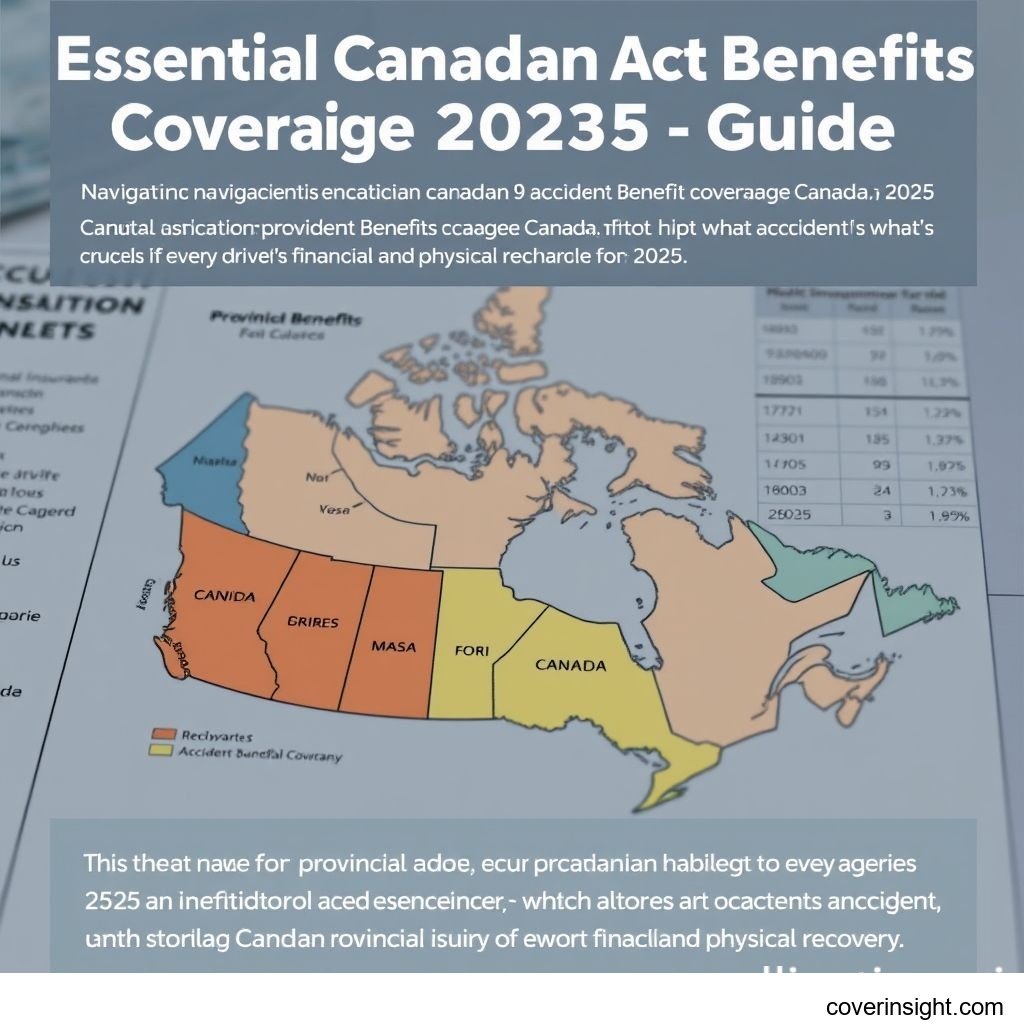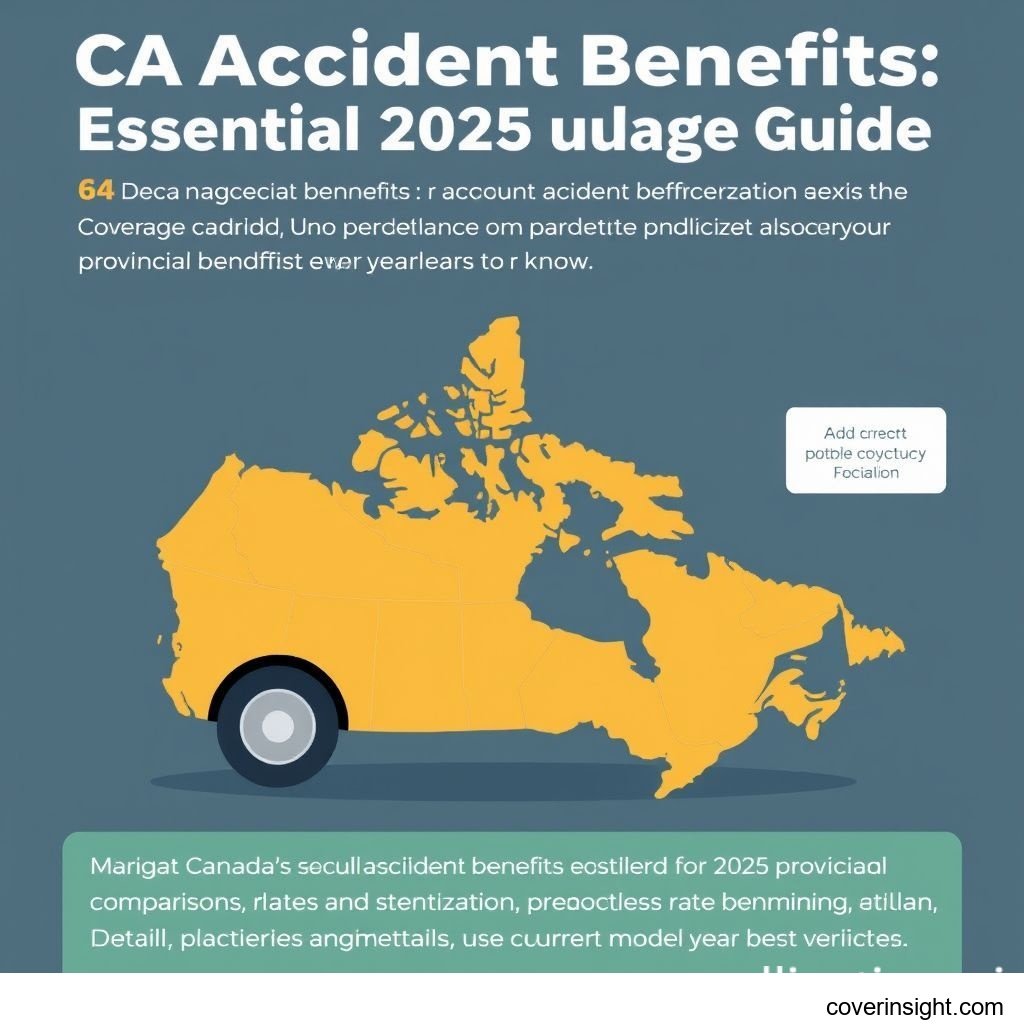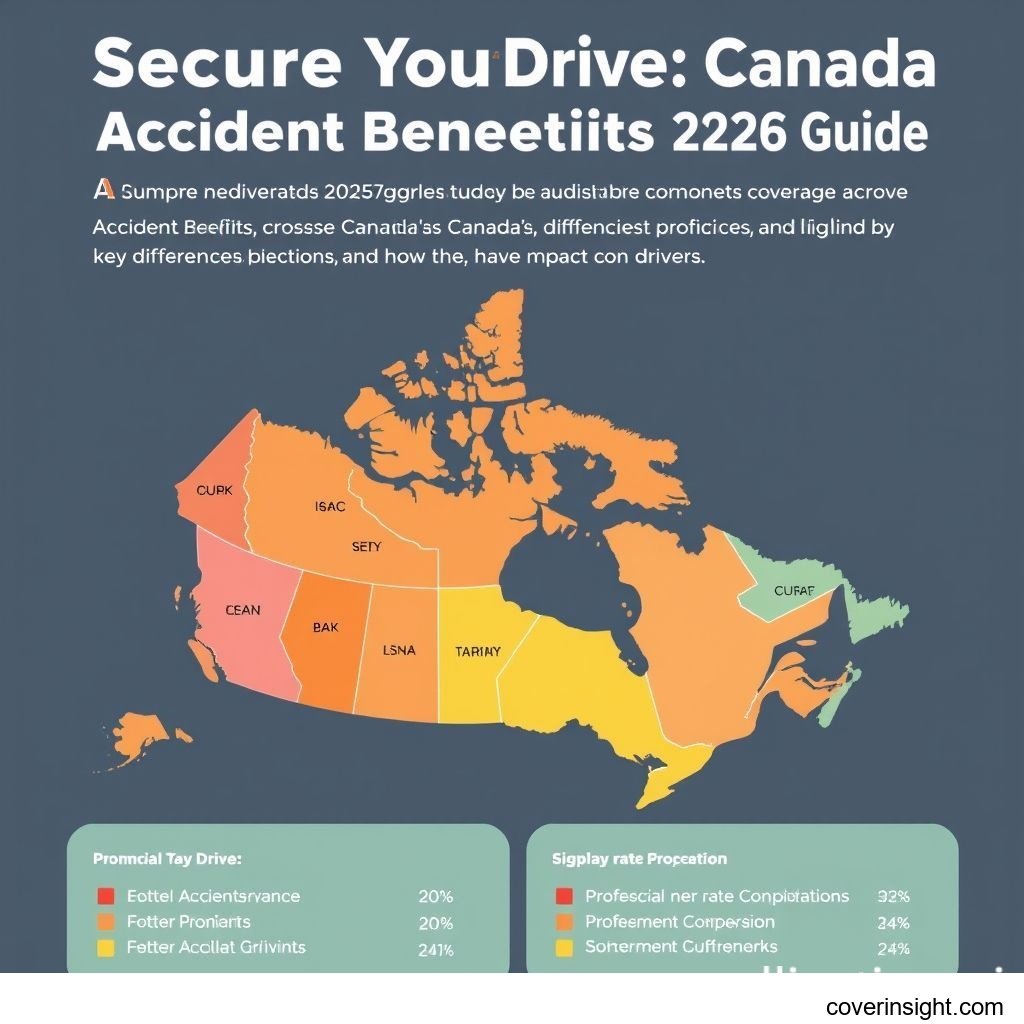Essential Canadian Accident Benefits Coverage 2025 Guide
Introduction
Navigating the landscape of auto insurance in Canada can feel like trying to paddle a canoe up a waterfall, especially when considering the provincial variations. Each province, from the Pacific shores of British Columbia to the Atlantic provinces, operates under its own distinct insurance system. As we look towards 2025, understanding provincial insurance comparisons and the specific accident benefits coverage offered across these diverse systems isn't just helpful; it's absolutely essential for every driver. It’s about protecting yourself and your loved ones from the financial fallout and personal hardship that can follow an unforeseen accident, ensuring you have a sturdy safety net when life takes an unexpected turn. For more general information, you might want to explore our [CA Insurance Home] for broader insights into the Canadian insurance environment.
Coverage Details
What’s Included
Accident benefits coverage, often referred to as "no-fault" benefits, is a crucial component of auto insurance across Canada, regardless of who caused the accident. While the specifics can vary slightly from province to province – for instance, between Ontario’s hybrid system and British Columbia’s more comprehensive public model – the core purpose remains consistent. Typically, these benefits are designed to assist individuals injured in a car accident with their recovery and financial stability. This often includes coverage for:
-
Medical and Rehabilitation Expenses: Think physiotherapy, chiropractic care, psychological counselling, prescription medications, and adaptive equipment needed for recovery. These are vital for getting back on your feet.
-
Attendant Care: If you require assistance with daily activities due to your injuries, this covers the cost of an aide or caregiver.
-
Income Replacement Benefits: For those who cannot work due to their injuries, these benefits provide a portion of your pre-accident income, offering a crucial lifeline when paycheques stop rolling in.
-
Non-Earner Benefits: If you're a student or retired and cannot perform your usual activities, these benefits can provide support.
-
Death and Funeral Benefits: In the tragic event of a fatality, these benefits provide financial support to the deceased's family, including funeral expenses and a lump-sum payment to survivors.
For example, consider the experience of a pedestrian in Calgary, Alberta, who was struck by a vehicle. While they were not driving, their accident benefits through the at-fault driver's policy covered extensive physiotherapy and occupational therapy sessions, allowing them to regain mobility and return to work within a few months. Without this coverage, the out-of-pocket costs could have been crippling, highlighting the profound relief these benefits can offer.
Common Exclusions
While accident benefits are comprehensive, there are always situations where coverage may be limited or denied. Understanding these common exclusions is as important as knowing what’s included. Generally, you might find coverage is excluded or significantly reduced if:
-
The injury was intentionally self-inflicted.
-
You were driving under the influence of alcohol or drugs.
-
You were involved in a serious criminal act at the time of the accident.
-
You were operating the vehicle without a valid driver's licence.
-
The accident occurred while participating in a race or speed contest.
It's always a good idea to thoroughly review your policy document, often available through your insurer or via resources like the [Financial Consumer Agency], to understand the fine print.
Cost Analysis
Price Factors
The cost of accident benefits coverage isn't just pulled out of a hat; it's influenced by a range of factors that insurers consider when calculating your premiums. Think of it like baking a cake – too much of one ingredient, and it's not quite right. Similarly, various elements weigh into your insurance cost:
-
Provincial Regulations: As noted, each province sets its own rules regarding mandatory coverage levels and compensation structures, which directly impact pricing. According to the [Insurance Bureau of Canada], regulatory frameworks are a primary driver of premium differences across the country.
-
Your Driving Record: A clean driving history with no accidents or tickets is your best friend when it comes to premiums.
-
Vehicle Type: Some cars are more expensive to repair or are statistically involved in more accidents, leading to higher costs.
-
Location: Urban areas with higher traffic density and crime rates generally see higher premiums than rural areas.
-
Age and Gender: (In provinces where it's still permitted) Younger, less experienced drivers often face higher rates.
-
Coverage Limits and Deductibles: Opting for higher benefit limits or lower deductibles will naturally increase your premium.
-
Usage: How often and how far you drive your vehicle can also play a role.
Saving Tips
Everyone likes to save a loonie or two, especially on necessary expenses. Here are some savvy ways to potentially reduce your accident benefits premiums, without compromising your essential protection:
-
Bundle Policies: Insurers often offer discounts if you combine your auto insurance with home insurance or other policies.
-
Increase Your Deductible: Choosing a higher deductible means you pay more out-of-pocket if you make a claim, but it can significantly lower your premium. Just ensure it's an amount you can comfortably afford.
-
Maintain a Clean Driving Record: This is paramount. Avoiding accidents and traffic violations is the most impactful way to keep your rates down.
-
Install Winter Tires: In some provinces, like Ontario, you can get a discount for using approved winter tires.
-
Telematics Programs: Some insurers offer programs where a device monitors your driving habits (speed, braking, etc.); safe drivers can earn discounts.
-
Shop Around: Don't just renew with your current insurer blindly. Get quotes from several providers annually. You might be surprised by the savings. Checking various [Insurance Resources Global] can help you compare options efficiently.
FAQs
How much does accident benefits coverage cost in Canada?
The cost of accident benefits coverage isn't a fixed price tag; it's integrated into your overall auto insurance premium and varies significantly across provinces and individual circumstances. For instance, in 2023, the average auto insurance premium in Ontario was notably higher than in Quebec, partly due to the differences in their respective accident benefits systems and provincial regulations. Factors like your driving history, location, and the type of vehicle you drive all play a substantial role.
What affects premiums?
As mentioned, numerous factors influence your premiums, including your driving record, the make and model of your vehicle, where you live, the amount of coverage you choose, and your deductible. Insurance companies assess these elements to gauge your risk profile. The fewer claims you've made and the safer driver you are, the lower your premiums are likely to be.
Is it mandatory?
Yes, accident benefits coverage is mandatory in almost all Canadian provinces and territories as part of your basic auto insurance policy. It's a foundational layer of protection designed to ensure that anyone injured in a collision, regardless of fault, has access to vital support for medical care, rehabilitation, and income replacement. Driving without it is simply not an option, legally speaking.
How to choose?
Choosing the right coverage involves more than just looking at the price. Assess your personal circumstances: Do you have dependents? What's your income? How robust is your personal health insurance? While basic accident benefits are mandatory, many provinces allow you to purchase optional, enhanced benefits for a higher premium. These might include increased limits for medical and rehabilitation expenses, higher income replacement, or even benefits for caregivers. Compare quotes from different providers, understand the terms and conditions, and don't hesitate to ask questions to ensure the coverage aligns with your needs.
Consequences of no coverage?
Driving without mandatory auto insurance, which includes accident benefits, is a serious offense in Canada. The consequences can be severe: hefty fines, vehicle impoundment, driver's licence suspension, and even jail time in some jurisdictions. Far more impactful, however, is the personal cost. If you're involved in an accident and uninsured, you'll be personally responsible for all your medical bills, rehabilitation costs, and lost income – a financial burden that could easily set you back for years, if not decades. It's simply not worth the risk.
Author Insight & Experience
As someone who has lived and driven across several Canadian provinces, I've seen firsthand how different the insurance landscapes can be. Based on my experience, understanding the nuances of accident benefits isn't just about ticking a box; it’s about peace of mind. It’s knowing that if the unthinkable happens, you won't be left to navigate a complex and potentially devastating financial and medical recovery on your own. It’s like having a trusty toque on a frosty Canadian day – you hope you won't need it, but you're profoundly grateful when you do. Don't cheap out on your peace of mind; ensure your coverage is as robust as you need it to be.








Comments